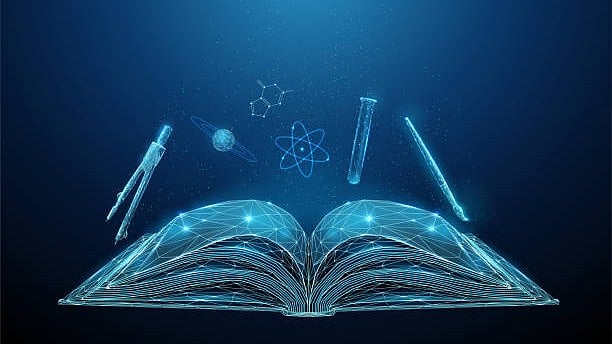
There is also a belief that serendipity plays a major role in discovering innovative ideas and inventions.
Credit: iStock Photo
Some of us will remember the ‘burden’ of learning science and even harbouring a dislike for it. The fault was in how science was taught – a hotchpotch of a theory here and an invention or discovery there. The approach was piecemeal rather than a holistic approach. This practice continues today. Some students study science solely to score high marks in various entrance exams, while others are satisfied by getting just passing marks.
There are no real “apple falling from the tree” or “eureka” moments in science, as we are led to believe. New inventions and discoveries are often based on experiments and data generated by previous scientists. We could say that one scientist’s fodder is another scientist’s feat.
There is also a belief that serendipity plays a major role in discovering innovative ideas and inventions. However, this belief has evolved into the notion that creativity and innovation result from a process that can be learned and managed. Yet, inventions like Velcro, penicillin, X-rays, Teflon, dynamite, and several others are the result of serendipity.
A common view of the history of science is that it progressed through a series of revolutions in which old theories were replaced by new ones that better explained the natural world. For instance, the Copernican revolution overturned the geocentric model of the universe, and the Darwinian revolution replaced the creationist account of life.
In his 2012 book, historian Hasok Chang argues that the history of science is neither simple nor neat. He contends that scientific revolutions are often exaggerated or mythologised and that old theories do not always disappear or become irrelevant. Instead, he shows that there are often multiple, co-existing, and complementary ways of understanding the same phenomena and that this pluralism and diversity enrich scientific knowledge.
Modern science is a collaborative effort. Scientists no longer toil in solitude in the dark corner of a laboratory, seeking knowledge. We have the examples of Marie and Pierre Curie, Wilbur and Orville Wright, and James Watson and Francis Crick. CV Raman, known for his work in light scattering, was assisted by his student K. S. Krishnan, the co-discoverer of Raman scattering, for which his mentor, C V Raman, was awarded the 1930 Nobel Prize in Physics.
Many believe American biologist James Watson and English physicist Francis Crick discovered DNA in the 1950s. In reality, this is not the case. Rather, DNA was first identified in the late 1860s by Swiss chemist Friedrich Miescher. Then, in the decades following Miescher’s discovery, other scientists—notably Phoebus Levene and Erwin Chargaff—conducted a series of research efforts that revealed additional details about the DNA molecule, including its primary chemical components and how they joined with one another. Without the scientific foundation provided by these pioneers, Watson and Crick may never have reached their groundbreaking conclusion of 1953: that the DNA molecule exists in the form of a three-dimensional double helix. This is a clear example that science is progressive, and there is nothing ‘big bang’ about it.
What we know today as climate change and global warming was first visualized in 1896 by Arrhenius, a Swedish chemist. Subsequently, other scientists built upon Arrhenius’s theory, conducting research that confirmed and expanded our understanding of the greenhouse effect and its impact on global temperatures.
The holistic method of teaching science emphasises integrating scientific knowledge with real-world applications, critical thinking, and interdisciplinary connections. This approach nurtures students’ curiosity and understanding by relating complex scientific concepts to everyday experiences. Rather than focusing solely on rote memorization, a holistic science education encourages hands-on learning, collaborative projects, and active inquiry.
A key aspect of holistic science teaching is fostering connections across disciplines. For instance, blending biology with social sciences can help students understand issues like public health or environmental sustainability from multiple perspectives. This interdisciplinary approach builds critical thinking and problem-solving skills, equipping students to consider scientific challenges in a broader context.
Holistic science teaching also emphasizes scientific advancements’ social and ethical implications, encouraging students to consider how science affects communities and individuals.
Schools that take pride in their ‘exclusive’ learning and teaching methods can add value to science teaching by incorporating a holistic method in addition to the prescribed textbook and syllabus. This will make the average student take an interest in science. Schools can also have a Science Club for gifted students and science enthusiasts. All this calls for the science teacher’s dedication and commitment and the school management’s encouragement.
Resources for students/ teachers
Current Science: A fortnightly interdisciplinary science journal published by the Current Science Association, Bangalore, in collaboration with the Indian Academy of Sciences. Started in 1932 by C V Raman, Birbal Sahni, Meghnad Saha, Martin Foster, and S.S. Bhatnagar.
Science Reporter: A monthly popular science magazine published in India since 1964 by the National Institute of Science Communication and Information Resources, a government agency based in New Delhi.
Resonance: A monthly by the Indian Academy of Sciences, Bangalore. All issues since its inception in 1999 are available online.
Breakthrough Science Society (BSS): Established in 1995 in Kolkata as a platform to create a new science movement in the country. Website: Breakthrough Science Society.org
BBC Documentaries (available on the net)(a) The Story of Science by Michael Mosley; (b) The Cell - the hidden kingdom